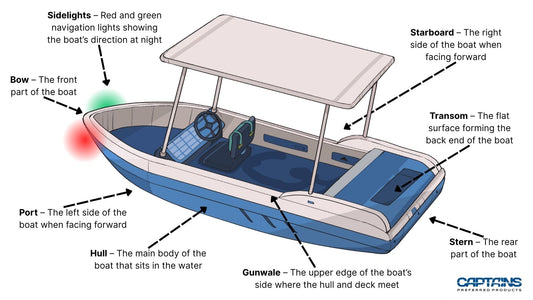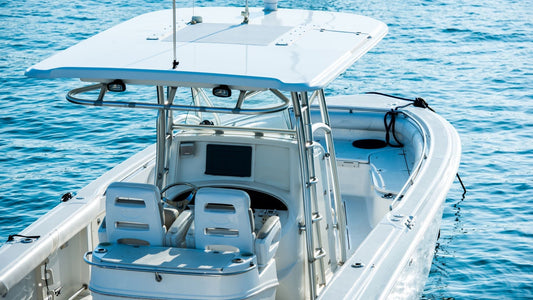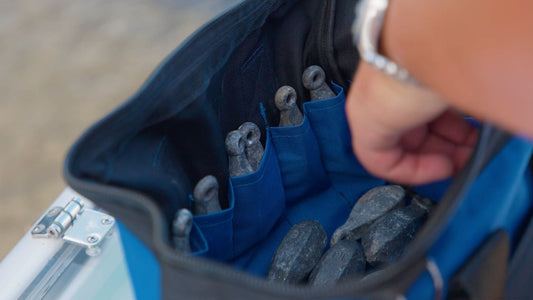
The Complete CPP Boat Safety/Equipment Checklist
Nicholas HeislerShare
In 2023 alone, there were over 3,800 boating incidents, including collisions with recreational vessels, collisions with fixed objects, and grounding.
While it can be easy to think that it will never happen to you, many factors are out of your control when you take your boat out on the water. Weather and the behavior of other boaters are just a few of the things you can’t control. But what you can do is ensure your boat is adequately equipped to maximize safety.
When it comes to boating, safety is not just a priority — it’s a necessity. A safe voyage begins with proper preparation. This comprehensive boat safety and equipment checklist is a great place to start.
Safety Requirements and Registration
Before embarking on your boating adventures, it’s critical to meet the legal safety requirements and ensure your vessel is registered. Registration laws vary by state and type of watercraft, so make sure to check with your state’s agency.
Typically, you’ll need to display your boat’s registration number on the hull and carry the registration certificate on board. Always check local regulations to stay compliant.
Also, keep in mind that there is some overlap in terms of boating safety requirements. While each state establishes laws regarding boat registration and operation, there is also a set of federal requirements for recreational boats. These regulations vary by boat size.
Mandatory Equipment Checklist
The following are essential pieces of equipment to have on your vessel.
Life Jackets and Personal Flotation Devices (PFDs)
According to the United States Coast Guard, there were 636 boating fatalities in 2022. In instances where the cause of death was known, three out of four victims drowned. Of these, 85% were not wearing a life jacket or personal floatation device (PFD).
Fire Extinguishers
The USCG’s 2022 recreational boating statistics show that fire was the first event in over 230 accidents last year. It was also a secondary or tertiary event in dozens of other incidents. The bottom line is that boat fires are a major risk, which is why you need a fire extinguisher. In fact, they are required on boats with living spaces or enclosed fuel storage.
Visual Distress Signals (VDS)
Visual distress signals (VDSs) and other equipment designed to help others find you are vital in the event of an accident or breakdown.
Sound-Producing Devices
The USCG also requires whistles or horns, which you can use to signal others in periods of reduced visibility. While you don’t need anything fancy, you do need a device that is loud enough to be heard from hundreds of feet away.
Navigation Lights
Navigation lights are essential for boating between sunset and sunrise. Make sure you have functional lights before you hit the water.
Ventilation Systems
For boats built after 1980, a proper ventilation system for fuel tanks is required. These systems help reduce the risk of explosive fumes.
Marine Sanitation Devices
If your boat has installed toilet facilities, it must have a Coast Guard-certified marine sanitation device.
For a full breakdown of these regulations, check out BoatUS Foundation’s interactive equipment regulations page. The resource divides mandatory equipment regulations by boat size so you can find out exactly what you need on your vessel.
Optional Equipment Checklist
Here are some additional items that are helpful but not required:
● First aid kit
● Tool kit and spare parts
● Anchor and line
● VHF radio
● GPS and chart plotters
● Emergency position indicating radio beacon (EPIRB) or personal locator beacon (PLB)
These items will ensure you are prepared for a wider array of emergencies and boating-related incidents.
Safety Precautions
Being properly equipped is a great start. But you also need to adopt a safety-minded mindset. Here are some pre-trip and on-water precautions to help you do just that.
Pre-Trip
Before departing, make sure that you:
● Inspect your trailer, lights, and tires/wheels
● Inspect your boat
● Verify that all gauges work
● Check fuel levels
● Review your equipment checklist
● Replenish any supplies you used last time
This is not a comprehensive list. You should incorporate other preparatory steps unique to your equipment setup, such as charging any navigation systems, etc.
On Water
When getting out on the water, you need to:
● Check the weather
● Let someone know about your destination and expected return time
● Avoid alcohol consumption
● Understand and respect water currents
● Ensure children wear life jackets at all times
Doing your prep work will set the stage for a fun (and safe) outing on the water. Always be diligent when it comes to safety, and never skip items on your checklist, even if you just performed them the day before.
Charting a Course for Safe Voyages
Boating is an enjoyable and rewarding experience, but it comes with a responsibility to prioritize your safety and the safety of those on your vessel. By following this comprehensive safety and equipment checklist, you ensure compliance and peace of mind.
When it comes to keeping your boat clean, look to Captains Preferred Products boat cleaning supplies. Find everything you need to keep your vessel squeaky clean all season — always at the best prices.




